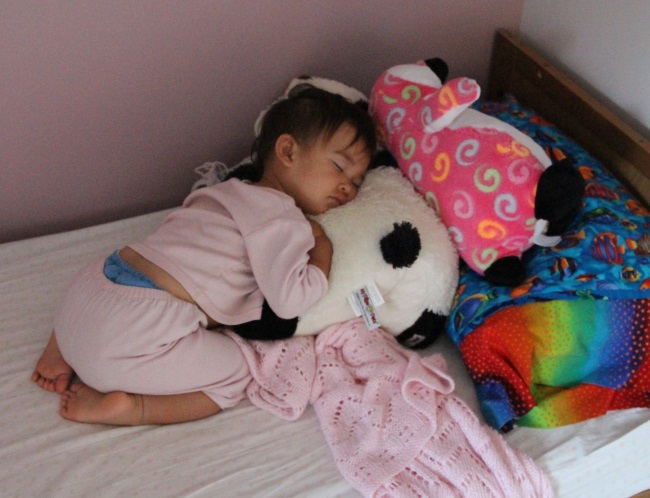| Posted by: Amy Fong You may need to make some adjustments to your usual daytime cloth diapering solutions in order to boost the absorbency of the diaper for night time use. For our eldest, we found that stuffing a pocket diaper with an extra microfiber or bamboo insert gave the diaper the extra boost that we needed to last through the night (i.e. 11 hours) with rarely any leaks. However, for our youngest, we found that we had the occasional leak (more often than we liked) even despite stuffing the pocket with an extra insert. We were using pocket diapers lined with a stay-dry microfleece lining. The diaper inserts did not seem thoroughly soaked, even when we had a leak. |
Initially, I suspected that the reason our cloth diapers were not absorbing as well as we'd liked during night time (even despite double stuffing) was because of repelling issues with respect to the microfleece lining (i.e. I suspected that there was a residue layer of something on the microfleece that was slowing the passage of water through the lining). However, we were using the same types of diapers during the daytime, and we had no leaks. I also tried stripping the pocket diapers, and that did not improve the situation at night. So I experimented with other ways of using the pocket diapers. Instead of placing the bamboo inserts inside the pocket, I placed them both on top of the pocket diaper's microfleece lining. This drastically improved the functionality of the diaper, and we went from occasional leaks to almost no leaks at all. I concluded that the microfleece lining was probably not wicking as quickly as was needed for night time use (although it worked fine during the daytime). Thus, for night time for our youngest, I switched to using pocket diapers with an absorbent lining - such as a cotton or bamboo lining. I stuffed the pocket with 2 bamboo inserts, or 1 bamboo insert and 1 microfiber insert. These worked like a charm -- for 11 - 12 hours straight.
Other options for night-time diapering include: using a fitted diaper (optionally with additional booster inserts) in connection with a PUL cover or wool cover; doubling up the prefolds (putting a first prefold folded inside a second prefold) and then covering with a PUL cover or wool cover; and using an all-in-one diaper with additional booster insert.
If your baby is sensitive to wetness, but she also tends to produce a "fast and furious" deluge, then to make her more comfortable you might consider using a pocket diaper lined with an athletic wicking material. Based on experiments that I've conducted using a measuring cup of water poured into various types of cloth diapers, I've observed that the athletic wicking material wicks away moisture much faster than microfleece.
Thus, night time diapering may require a little experimentation to find the solution that works for your baby. Once you've found that solution, then you can sleep soundly knowing that you are not only reducing solid waste but ensuring your baby is sleeping in a chemical-free cloth diaper.
What's your night time diapering solution?
Other options for night-time diapering include: using a fitted diaper (optionally with additional booster inserts) in connection with a PUL cover or wool cover; doubling up the prefolds (putting a first prefold folded inside a second prefold) and then covering with a PUL cover or wool cover; and using an all-in-one diaper with additional booster insert.
If your baby is sensitive to wetness, but she also tends to produce a "fast and furious" deluge, then to make her more comfortable you might consider using a pocket diaper lined with an athletic wicking material. Based on experiments that I've conducted using a measuring cup of water poured into various types of cloth diapers, I've observed that the athletic wicking material wicks away moisture much faster than microfleece.
Thus, night time diapering may require a little experimentation to find the solution that works for your baby. Once you've found that solution, then you can sleep soundly knowing that you are not only reducing solid waste but ensuring your baby is sleeping in a chemical-free cloth diaper.
What's your night time diapering solution?

 RSS Feed
RSS Feed
